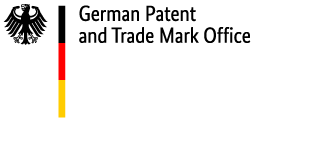Content
New types of trade marks and changed procedures
On 14 January, the Trade Mark Law Modernisation Act will come into force – DPMA President: new provisions strengthen rights of trade mark owners
Press release of 11 January 2019
Munich. Movements, holograms, multimedia: From 14 January on, applicants at the German Patent and Trade Mark Office (DPMA) will be able to use new types of trade marks. The Trade Mark Law Modernisation Act (Markenrechtsmodernisierungsgesetz) will come into force. With the certification mark, a brand new trade mark category is now available, granting quality labels a stronger legal position than before. The Act has arisen from the European Union Trade Mark Directive, which has been in force since 2016. “The new provisions strengthen the rights of trade mark owners. The implementation of the Directive into national law will bring the trade mark community in the European Union closer together,” DPMA President Cornelia Rudloff-Schäffer said. “The German Patent and Trade Mark Office has played a key role in drafting the provisions. We have adapted and optimised our processes with a great deal of effort – from the examination procedures up to our IT systems.”
The newly introduced certification mark provides quality labels – such as those for the organic production of goods, for fair production conditions or for special safety standards – as trade marks with their own specific protective conditions. So far, there have only been individual and collective marks in the German legal system. For quality labels, however, these categories hardly work, because the main function of the trade mark is to indicate the origin of a product of a particular manufacturer. But quality labels can be affixed to goods from different manufacturers, that is to all those products meeting the requirements of the quality label. Under the traditional trade mark categories, it was possible, at best, to protect quality labels for the services of the certifier concerned, such as for carrying out quality controls, but not for the products on which they were used.
For this reason, certification marks do not focus on the function of the trade mark as an indication of origin but on the guarantee function. The trade mark owners need to be neutral and must not simultaneously offer the very goods and services which they themselves have certified. Moreover, they must transparently disclose their standards with regard to product and quality characteristics as well as the conditions of use in the regulations governing use of the trade mark. At the DPMA, however, such a trade mark can only be registered if the certifying character is clearly recognisable from the sign.
With the new provisions, the condition that trade marks have to be capable of being represented graphically ceases to apply. Signs can now be represented in any suitable format with generally accessible technology, for example with audio and image files. This is how new types of trade marks emerge, such as sound marks, position marks, sample marks, movement marks, hologram marks and multimedia marks. Because of the new types of representation, certificates of the DPMA will in future contain a link by means of a QR code leading to the corresponding representation in the electronic Trade Mark Register.
Additional absolute grounds for refusal of registration – such as protected geographical indications and protected designations of origin – have been added. There are also changes in the opposition proceedings. Greater transparency is achieved, among other things, by the possibility of having licences or the willingness to grant licences entered in the Trade Mark Register. Further details on the reform of trade mark law can be found on our Website.
The German Patent and Trade Mark Office
Inventiveness and creativity need effective protection. The DPMA is the German centre of expertise for all intellectual property rights – patents, utility models, trade marks and designs. As the largest national patent office in Europe and the fifth largest national patent office in the world, our office stands for the future of Germany as a country of inventors in a globalised economy. Its staff of over 2,600 at three locations – Munich, Jena and Berlin – provide services for inventors and companies. They implement federal innovation strategies and develop the national, European and international protection systems further.
Last updated: 10 December 2025

Not only protecting innovations
Social Media